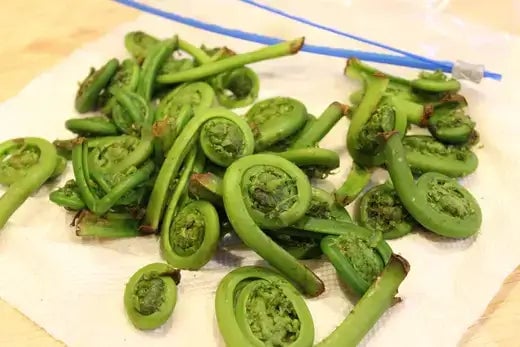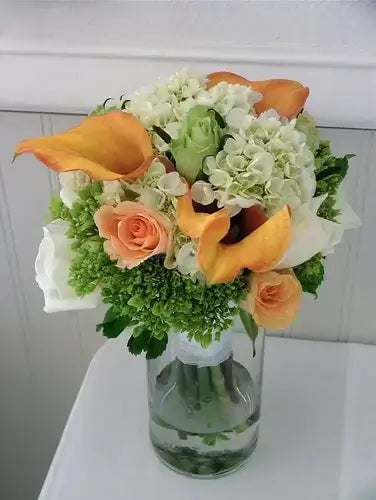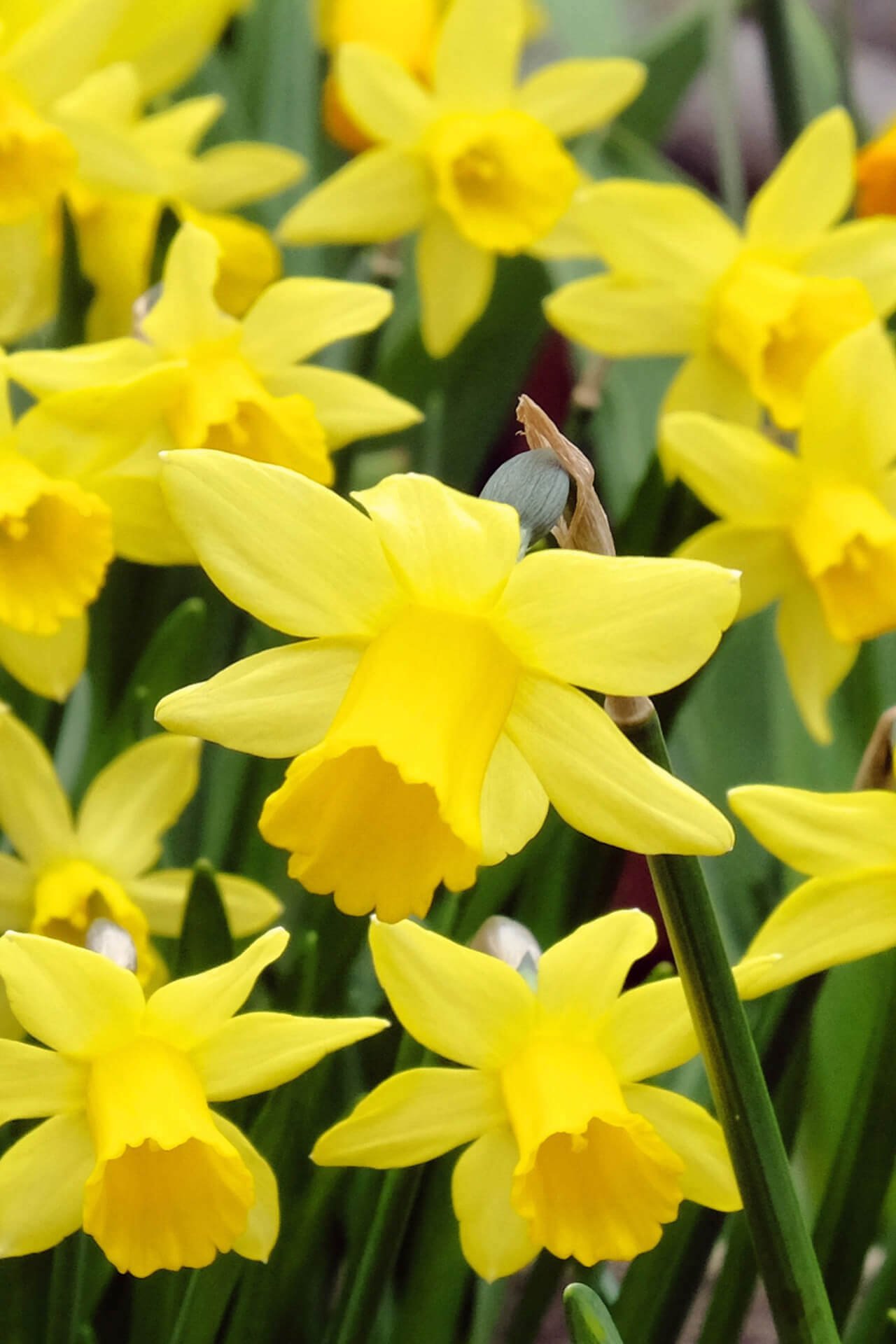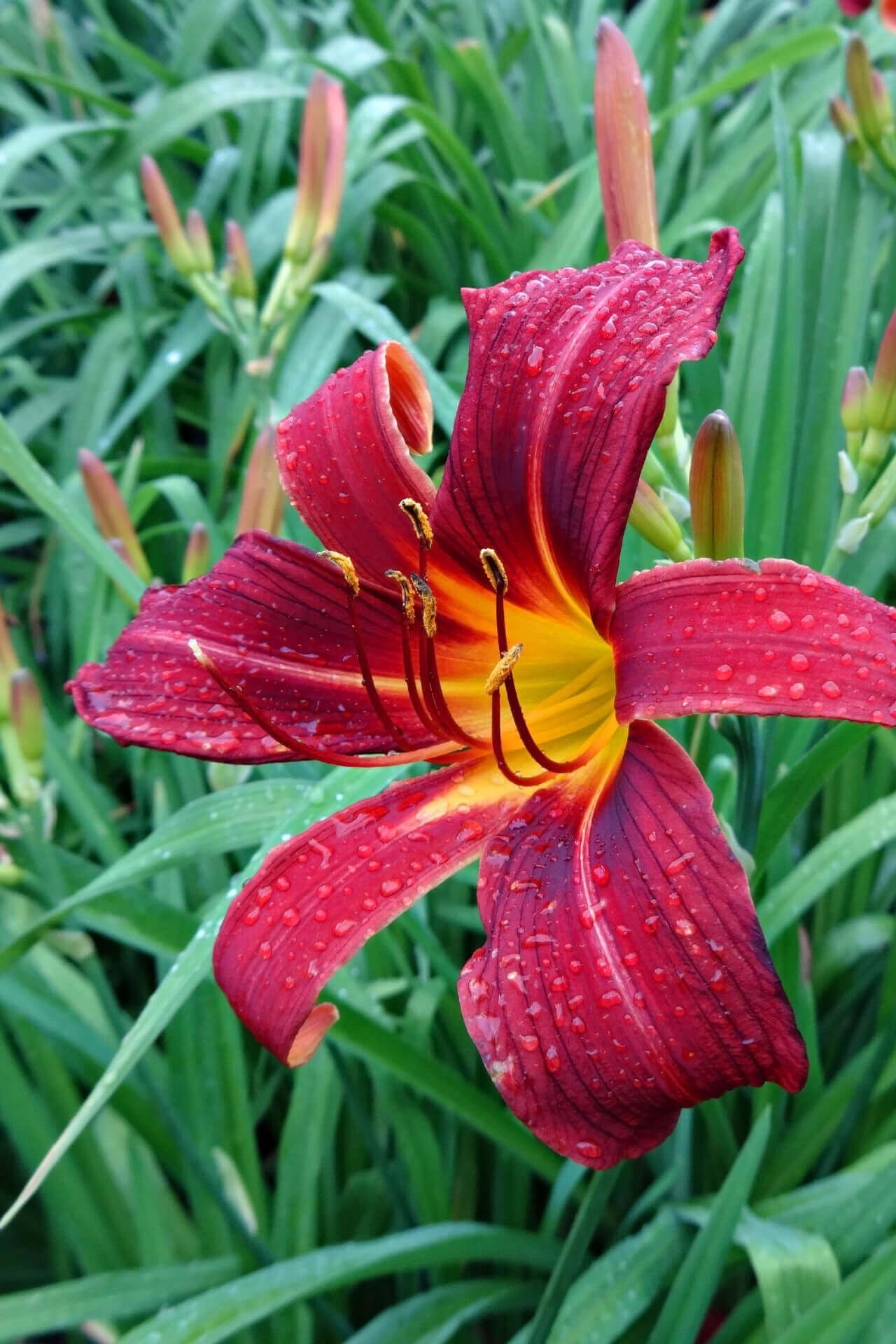10 Easy Floral Arrangements Anyone Can Learn Introduction:
Floral arrangements are a delightful way to bring nature's beauty into your living spaces. Whether you're a seasoned florist or just a beginner, creating stunning arrangements doesn't have to be complicated.
In this guide, we'll explore ten easy floral arrangements that anyone can learn, allowing you to infuse your home with a touch of elegance and freshness. With some basic techniques and a dash of creativity, you'll be well on your way to becoming a floral artist.
Classic Rose Bouquet:
The classic rose bouquet is timeless and elegant. Choose a variety of colored roses, ensuring they are similar in size. Trim the stems at an angle and arrange them in a spiral formation, creating a dome-like shape. Secure the bouquet with floral tape, and wrap it with a ribbon for a finishing touch.
Single Bloom Focus:
Focus on a single, large bloom for a minimalist yet impactful arrangement. It could be a sunflower, peony, or any other captivating flower. Please place it in a stylish vase, ensuring it stands out as the centerpiece. Add some greenery or smaller filler flowers to complement the central bloom.
Mason Jar Wildflowers:
Channel a rustic charm by arranging wildflowers in a mason jar. Collect an assortment of wildflowers from your garden or a local flower shop. Trim them to different heights and place them in the mason jar for a natural and effortless look.
Monochromatic Elegance:
Select flowers of the same color family but in varying shades to create a monochromatic arrangement. It creates a harmonious and elegant visual effect. Arrange the blooms in a tall vase, with the darkest shadows at the bottom and gradually transitioning to lighter shades at the top.
Foliage and Filler Showcase:
The foliage and filler can sometimes steal the show. Gather various leaves, branches, and filler flowers to create an arrangement focused on texture and form. Please place them in a vase with different heights to achieve a balanced and captivating look.
Floating Flower Bowl:
Float flowers in a shallow water bowl to create a unique arrangement. Choose blossoms like orchids, gardenias, or carnations. Place the blooms on the water's surface and let them naturally arrange themselves for an ethereal effect.
Seasonal Delight:
Embrace the beauty of each season by using flowers that are in bloom. For spring, opt for tulips and daffodils; go with vibrant sunflowers and daisies for summer. Incorporate autumnal tones like chrysanthemums and berries for fall and elegant amaryllis for winter.
Cascading Beauty:
Arranging flowers in a cascading manner creates a dynamic visual. Choose a mix of large and small blooms and trailing vines or ivy. Assemble them in a tall vase or a hanging basket, allowing the arrangement to flow gracefully downward.
Herb and Flower Fusion:
Combine flowers' fragrant beauty with herbs' aromatic charm. Lavender, rosemary, and mint can complement blooms like roses or daisies. Arrange them so that both the flowers and herbs shine.
Elevated Elegance:
Elevate your floral arrangement by using a tiered stand. It works particularly well for small, compact blooms like ranunculus or anemones. Assemble the tiers with varying heights and place a single color or a small arrangement on each level.
Floral arrangements are an excellent way to express creativity and bring nature's beauty indoors
With these ten easy floral arrangement ideas, you can confidently create stunning displays for any occasion. Remember, have fun, and let your artistic instincts guide you. Whether you're a novice or an experienced enthusiast, these arrangements will brighten up your space and bring joy to those who see them.
So, gather your favorite flowers, unleash your creativity, and let the art of floral arrangement become a fulfilling part of your life. Engaging with floral arrangements is not just a pastime; it's an art form that brings myriad benefits to your life. Floristry is more than just arranging flowers in a vase; it's about storytelling, self-expression, and invoking feelings.
Each bloom carries a unique language, a hidden message you can convey through your arrangements. Whether it's the delicate elegance of roses or the wild exuberance of sunflowers, every choice tells a story, allowing you to communicate your emotions, thoughts, and desires without uttering a single word. As you delve into the world of floristry, you'll find that selecting, arranging, and caring for flowers fosters a sense of mindfulness and presence.
Arranging flowers requires your complete attention, encouraging you to be in the moment and let go of any stress or worries. This meditative quality can be profoundly therapeutic, providing a peaceful respite from the demands of everyday life. The floral arrangement also nurtures your creativity. Like a painter with a blank canvas, you can compose your masterpiece using petals, leaves, and stems as your medium.
The possibilities are endless:
You can create symmetrical arrangements for a sense of order or opt for asymmetry to evoke dynamic energy. You'll experiment with color combinations, textures, and forms; with each creation, you'll discover new facets of your artistic self.
Moreover, immersing yourself in the art of floral arrangement can deepen your appreciation for the beauty of the natural world. As you handle and arrange flowers, you'll gain a heightened awareness of their intricate details and the delicate balance of nature. This awareness may extend beyond floristry, leading to a greater connection with the environment and a desire to preserve and protect it.
One of the most rewarding aspects of floristry is the joy you'll bring to others
Sharing your creations with friends and family or even through community events can spread happiness and brighten someone's day. A thoughtfully arranged bouquet can convey love, sympathy, celebration, or gratitude, forging connections and fostering a sense of togetherness.
Incorporating floral arrangements can also lead to new friendships and opportunities. This sense of community can introduce you to diverse perspectives and techniques, enriching your skills and broadening your horizons. In conclusion, the art of floral arrangement offers a path to fulfillment beyond flowers' surface beauty. It's a journey of self-discovery, creative expression, mindfulness, and connection with nature and fellow enthusiasts.
As you embark on this journey, you'll find yourself nurturing your artistic spirit, embracing the therapeutic qualities of the practice, and bringing beauty and happiness to both your life and the lives of others. So, allow the world of floristry to bloom within your heart, and watch as it transforms your life into a vibrant tapestry of petals and possibilities.
The Art of Growing Flowers for Stunning Floral Arrangements
Cultivating flowers for your arrangements delivers a gratifying experience by offering visual delight and a strengthened bond with nature. Planting a garden with different flowers that can be used for arrangements lets you have fresh bouquets to display on the kitchen table throughout spring and fall while enabling you to give them as gifts and decorate for celebrations. This complete guide explains the steps needed to select and plant flowers you can nurture and harvest for versatile arrangements to keep your home decorated with beautiful blooms from your garden.
1. Choosing the Right Flowers
To grow flowers for arrangements, you must first select the appropriate plants. Select flower varieties that generate extended stems with good post-cut durability alongside visual appeal through their coloration texture or structure. Zinnias, cosmos, and snapdragons are classic flowers that consistently offer plentiful blooms across multiple colors. Sunflowers create eye-catching vertical accents with bright hues, while lisianthus and dahlias deliver elegant blooms reminiscent of roses. Add filler flowers and foliage like baby's breath, dusty miller, or ornamental grasses to complete your bouquets. Creating stunning designs requires combining focal flowers (large and vibrant blossoms) with secondary blooms and textural greenery.
2. Planning Your Cutting Garden
After compiling your desired plant varieties, you should design a garden layout considering how each plant grows. Flowers exhibit diverse growth patterns, with some plants sprawling across the ground while others reach towering heights. Ensure that each plant type has adequate room to expand and position taller plants so they do not cast shadows on smaller ones. Raised beds or container gardening are options to explore when you face space restrictions. Organize flowers that require similar sunlight exposure and watering conditions in the same areas. Flowers harvested for bouquets grow best under full sun for six hours daily, while some varieties of begonias and impatiens can survive in partial shade for gardens with little sunlight.
3. Preparing the Soil
Successful gardening requires healthy soil as its essential foundation. Most flowers thrive best when planted in well-draining, loamy soil containing organic matter. Work the surface of 8 to 12 inches of soil to remove rocks and debris before planting, and include compost or well-rotted manure to enhance nutrient content. Flowering plants generally thrive best in soil with a pH of 6.0 and 7.0. Check your soil's pH and nutrient content through a soil test to determine further need for lime, sulfur, or supplemental compost amendments. Thorough soil preparation promotes strong root systems and healthy plant development, increasing flower production.
4. Sowing Seeds and Transplanting
Gardeners can successfully grow flowers like zinnias and sunflowers by direct seeding in the garden only after the frost season ends. A successful start for snapdragons and lisianthus flowers requires indoor germination or buying seedlings from nurseries. Plant each species according to the recommended planting times and depths. Seedlings started indoors should be hardened off by exposing them to outdoor conditions for several hours daily for one to two weeks before transplanting them. Seedlings become accustomed to outdoor environments while minimizing transplant stress through this method. Follow the instructions for spacing on seed packets and plant labels when planting to ensure enough room for each flower to reach its mature size.
5. Watering and Fertilizing
Regular watering and proper fertilization lead to strong stems and bright blooms. New seedlings and transplants require frequent but light watering to help roots develop properly. When plants reach maturity, you should water them once or twice weekly by targeting the root zone instead of using overhead watering methods. Applying mulch at the base of each plant retains moisture levels while preventing weed growth and stabilizing soil temperature.
For plant nutrition during the growing season, select either a balanced slow-release fertilizer or administer compost tea every couple of weeks. Overusing nitrogen results in plants developing abundant foliage but producing fewer flowers. Support flower production by choosing a balanced blend fertilizer with more phosphorus. Product instructions should always be followed because over-fertilizing will stress your plants and result in weak stems that flop around.
6. Pruning and Staking
Cut-flower varieties develop bushier growth and produce more flowers when pinched or pruned. Trimming the growing tip of young zinnia or cosmos plants encourages the development of multiple lateral stems rather than one tall stem. To achieve longer flower stems, allow them to grow naturally, but ensure you provide support through staking as needed. Sunflowers and dahlias represent tall species that need the support of bamboo stakes or similar structures to remain standing during windy weather. Deadheading your plants by removing spent blooms prolongs their flowering period while maintaining plant health.
7. Harvesting at the Right Time
Proper timing for cutting flowers extends their vase life. The best time to pick blooms is in the morning or late afternoon because plant tissues hold more water when temperatures drop. Opt for blossoms that start to open instead of fully bloomed flowers because they keep opening when cut. Make a diagonal cut above a leaf node or branching point using clean, sharp scissors or pruning shears. After cutting stems, submerge them into a clean bucket of lukewarm water containing floral preservatives or bleach to minimize bacterial growth.
8. Post-Harvest Care and Arranging
After entering the space, make an angled cut to the stems while under running water and remove any leaves that would sit below the vase's water level because foliage submerged in water will decay fast and reduce how long the flowers last. Place the stems into a clean container and fill it with cool water mixed with floral preservatives when you have them. To maintain bouquet freshness, replace the water every two days and redo cuts on the stems whenever you change them. With various colors, textures, and shapes, let your creativity shine: Create unique bouquets by blending big focal flowers with accent blooms and filler sprigs with fascinating foliage.
9. A Seasonal Progression
Select different types of flowers that bloom at various times to maintain fresh bouquets year-round. Spring, Tulips, and ranunculus herald the arrival of spring, while snapdragons, zinnias, and sunflowers become the primary bloomers throughout summer. Late-season color remains vibrant thanks to dahlias and chrysanthemums when fall arrives. A garden plan with overlapping flowering periods allows constant access to fresh flowers for indoor arrangements.
By cultivating flowers, you can decorate your home with lively seasonal displays made from plants you grew from seeds to full blooms. The proper selection of plant varieties combined with their necessary care and optimal harvesting techniques leads to the consistent availability of durable and healthy flowers. A well-designed cutting garden will fulfill your need for creative expression and beautiful aromatic spaces, whether your preference lies in vibrant, bold arrangements or gentle pastel displays.
Read more

TN Nurseries best selling moss1. Cushion moss2. Sheet moss3. Fern moss4. Garden moss5. Lawn mossSome people think that water gardens will attract and produce mosquitoes. That is not the case. You c...

Fiddlehead fern or ostrich fern are the shared names given to Matteuccia struthiopteris, a unique edible plant. The fiddleheads of this plant taste similar to asparagus and are rich in Vitamins A a...




